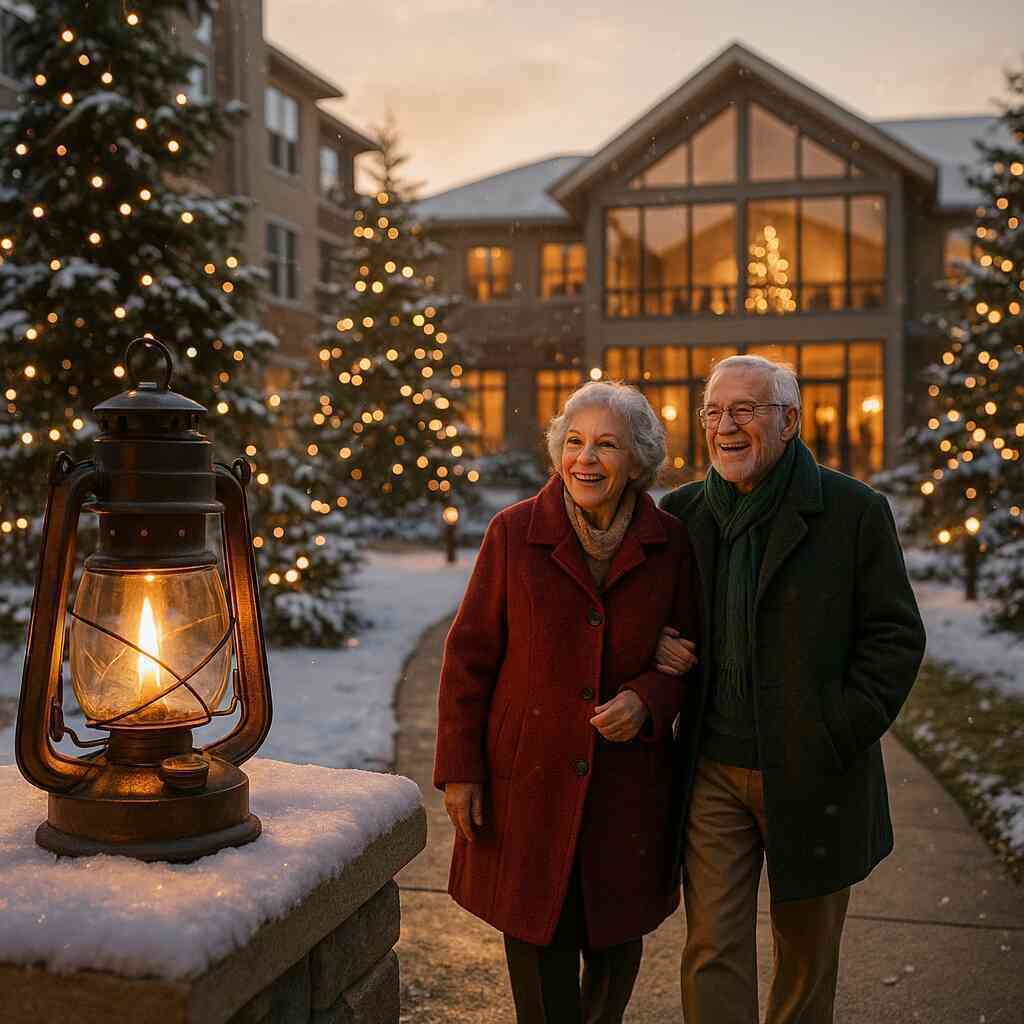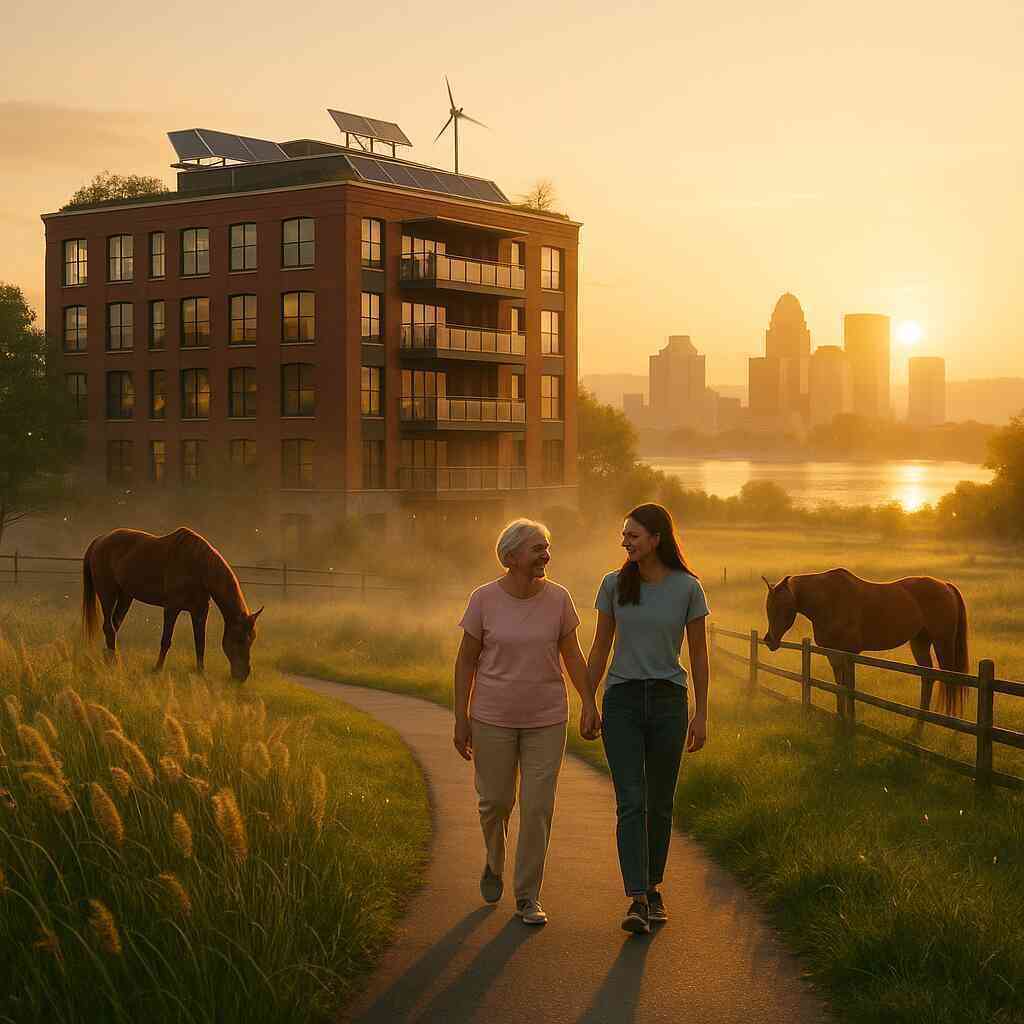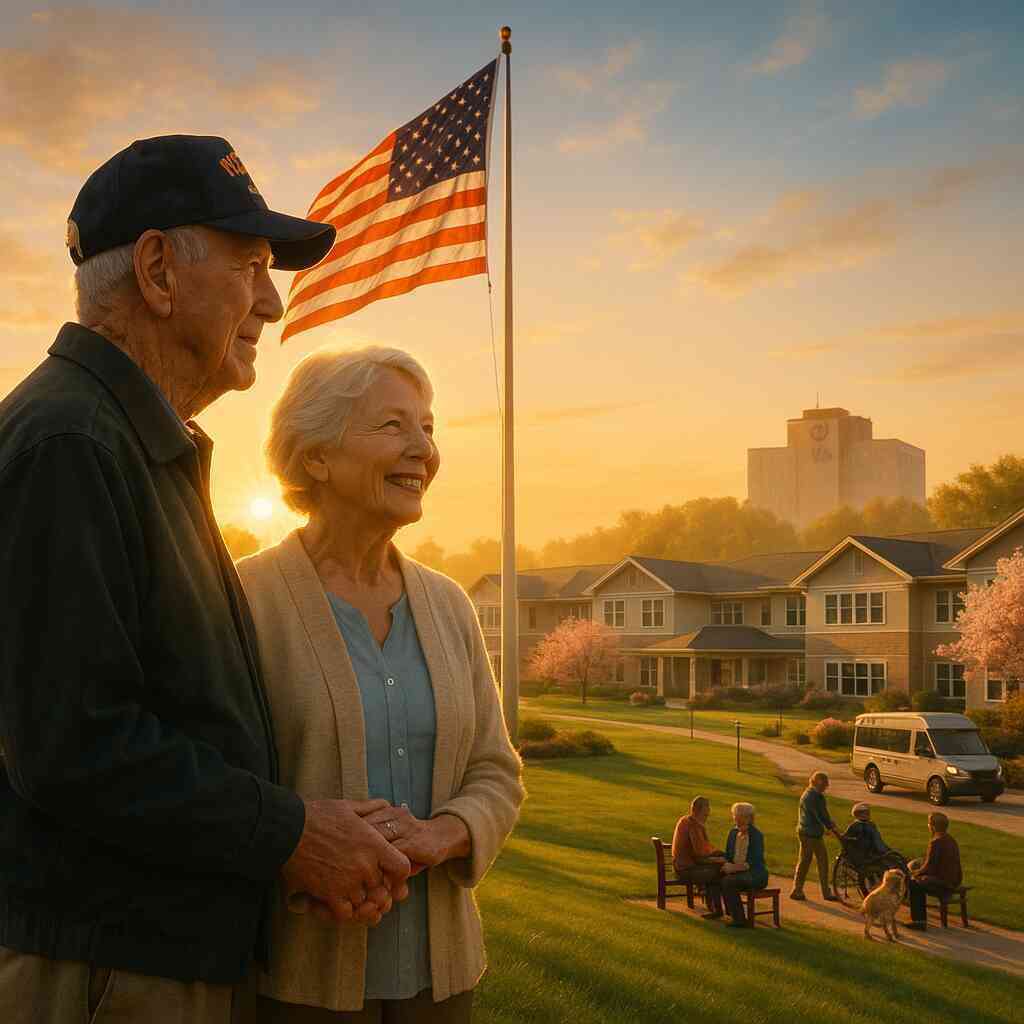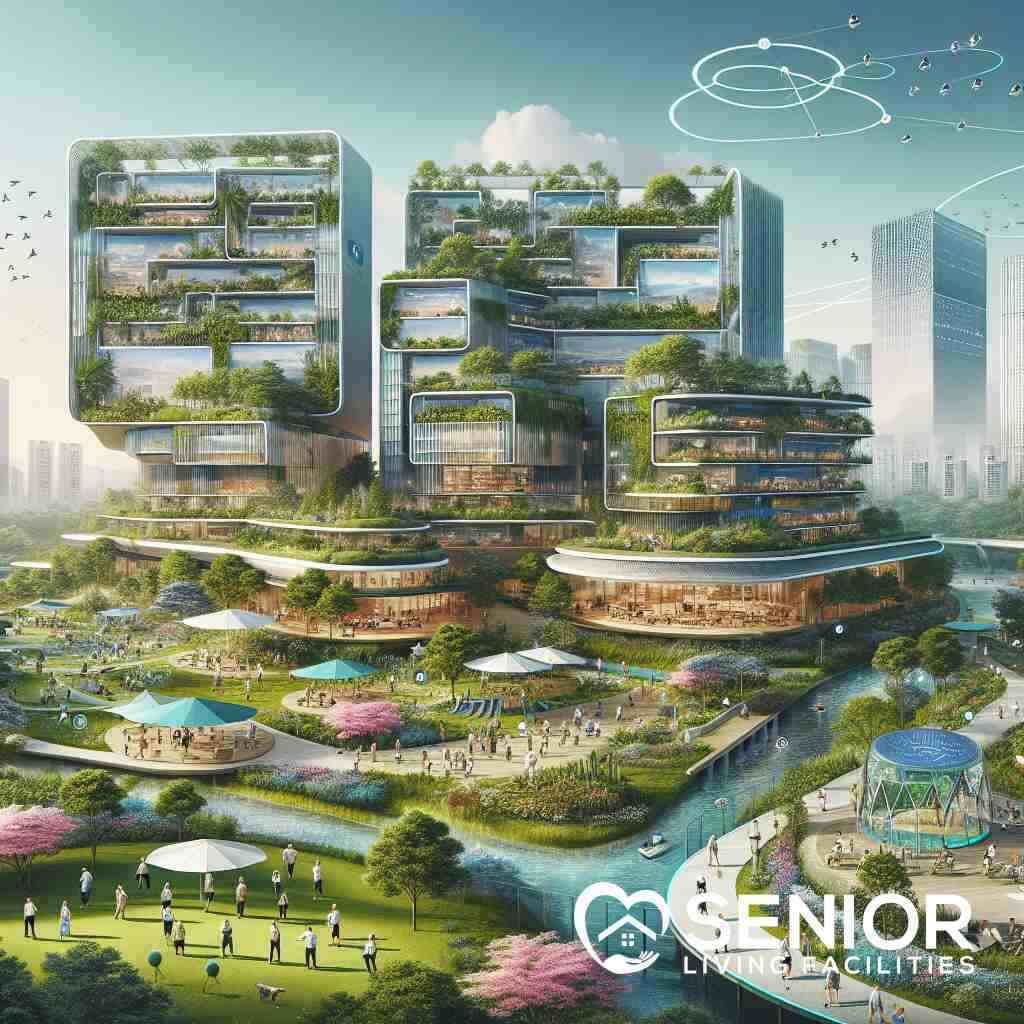
Top Emerging Trends for Senior Living Facilities by 2025
October 7, 2025
Introduction to the Future of Senior Living
Shaping the Landscape of Senior Care
As we look toward the future of senior living, it is crucial to acknowledge the evolving landscape of senior care facilities. Aging populations necessitate a reimagining of how we perceive and construct these spaces, focusing on tailored solutions that embody both care and independence. The rise of senior living communities reflects a commitment to providing environments that offer a blend of healthcare support, recreational activities, and a sense of belonging. By 2025, these communities will have further metamorphosed, presenting innovative approaches to cater to diverse elderly needs. This change is underpinned by a growing understanding of the importance of personalizing care in senior living facilities, ensuring each individual’s requirements are met with precision and compassion.
Navigating the Journey to 2025
The pathway to 2025 is marked by a series of transformative steps, each aimed at enhancing the experience of senior living. Current trends indicate a shift from traditional models towards those emphasizing adaptability and resilience in care practices. With emerging trends for senior living in Arizona and beyond, it’s vital for facilities to adapt to novel technologies and design principles. These innovations promise to redefine how elderly care is delivered, as well as improve the quality of life for seniors. Additionally, stakeholders in the senior living industry are intensively exploring ways to assimilate breakthrough methodologies that align with future demands.
Embracing Innovative Senior Care Solutions
The drive toward innovative solutions in senior care is relentless, as professionals strive to ensure that facilities not only meet but anticipate the needs of future occupants. Embracing technological advancements is pivotal, especially in areas concerning health monitoring and communication. The emphasis on personalization trends in senior communities, for example, is an indicator of the future trajectory of senior living solutions. This commitment is mirrored in the pursuit of environmentally sustainable, socially engaging, and technologically integrated living spaces that promise a richer, more connected life for seniors. As we advance, the goal remains steadfast-to create communities that resonate with the evolving aspirations and expectations of today’s seniors, transforming care into a truly dynamic experience.
Revolutionary Technological Integration
Senior-Centric Smart Home Technology Advancements
The integration of smart home technologies specifically designed for seniors is poised to revolutionize senior living facilities by 2025. These technologies aim to enhance safety, comfort, and independence for residents. Advanced sensor systems can monitor movement and detect falls, providing instant alerts to caregivers and medical professionals. Voice-activated devices offer hands-free operation for various tasks, catering to mobility issues commonly faced by seniors. Moreover, smart kitchens equipped with automated appliances ensure seniors can prepare meals safely. The benefits extend beyond convenience, as this technology fosters a greater sense of autonomy and dignity in daily living, significantly enhancing the quality of life for residents.
Furthermore, the customization of these smart technologies aligns seamlessly with personalization trends in senior communities. By tailoring solutions to individual preferences and needs, senior living facilities are better equipped to provide a cohesive blend of care and independence. The strategic integration of these innovations not only meets current demands but also anticipates future needs, positioning communities as leaders in senior care advancement. The prospect of senior living facilities implementing these technical enhancements is encouraging, highlighting the critical role of technology in shaping a progressive path forward.
AI and Remote Monitoring in Elderly Care
Artificial Intelligence (AI) is set to redefine elderly care by providing enhanced monitoring and predictive analytics capabilities. AI-driven systems can analyze patterns in seniors’ behavior, health metrics, and environmental interactions, offering early detection of potential health issues. This not only optimizes personalized care plans but also reduces emergency incidents by addressing concerns before they escalate. Moreover, AI assists in streamlining operations within senior living facilities by automating routine tasks and improving efficiency.
Remote monitoring for the elderly plays an eightball role in this technological shift, allowing caregivers to maintain a watchful eye without being intrusive. Systems integrated with AI can provide peace of mind to families and healthcare providers, ensuring that seniors receive prompt attention when necessary. Understanding when and how to intervene is crucial in delivering effective care. This approach minimizes stress and enhances the overall well-being of seniors, reinforcing their sense of security and comfort within their living environments.
Geriatric Telehealth: The New Normal
Geriatric telehealth advancements have undoubtedly become a game-changer in senior care, transforming how healthcare services are delivered in senior living communities. Telehealth facilitates direct access to healthcare professionals without the need to travel, which is particularly beneficial for seniors with mobility issues or chronic conditions. Video consultations, remote diagnostics, and digital therapeutics have become commonplace, emphasizing convenience and efficiency in healthcare delivery.
Healthcare providers can offer regular assessments and consultations, ensuring the continuous monitoring of health conditions. This shift towards telehealth not only reduces hospital readmissions and emergency room visits but also encourages preventative healthcare practices. As such, telehealth ensures that senior care aligns with the evolving expectations of accessibility and reliability in healthcare services.
Beyond individual consultations, telehealth platforms offer educational sessions and wellness resources, promoting a proactive approach to health management among residents. The move to embrace telehealth in senior living facilities signifies a broader commitment to integrating technological solutions for enhancing healthcare outcomes and enriching the lives of seniors. This transition is supported by ongoing efforts to integrate technology seamlessly into everyday living, advancing the holistic health approaches prevalent in future-ready senior communities.
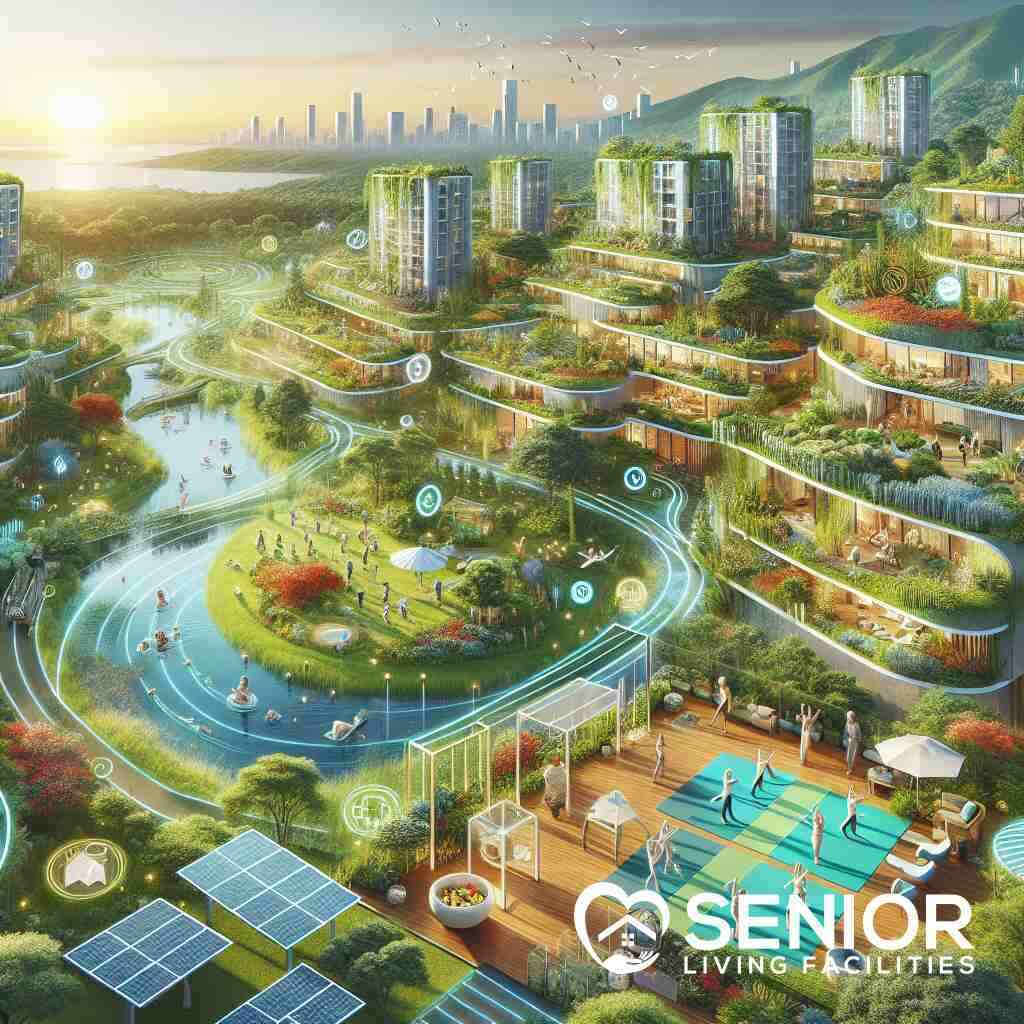
Design and Sustainability Paradigms
Biophilic and Age-Friendly Design Principles
In senior living facilities, incorporating biophilic and age-friendly design principles is transforming how these communities are structured and experienced. Biophilic design focuses on creating a natural connection with the environment by incorporating elements such as natural light, plants, and outdoor views. These elements not only enhance aesthetic appeal but also contribute significantly to the health and well-being of residents by reducing stress and promoting a sense of tranquility. Integrating such design principles helps create spaces that are nurturing and restorative.
Age-friendly design principles emphasize accessibility and functionality, ensuring that the physical environment is conducive to the needs of seniors. Features such as wider hallways, non-slip flooring, and ergonomically designed furniture enhance safety and ease of movement. These designs align with age-friendly design principles for senior facilities and advocate for environments that promote independence while minimizing the risks associated with aging. This harmonious blend of biophilic and age-friendly elements offers a holistic approach to senior living, paving the way for environments that are both beautiful and practical.
Eco-Friendly Senior Living Practices
Eco-friendly senior living practices are at the forefront of innovations in senior living communities. Facilities are increasingly embracing sustainable practices such as energy-efficient lighting, solar panels, and water-saving technologies. These initiatives not only reduce environmental impact but also lead to significant cost savings, which can be redirected towards enhancing resident amenities. Waste reduction programs, including recycling and composting, are becoming standard practice, contributing to the sustainability of these communities.
Moreover, eco-friendly practices extend to the incorporation of green transportation options within the community. Offering electric vehicle chargers and promoting carpooling are initiatives that support sustainable senior housing. For residents, these improvements mean healthier living conditions and the opportunity to participate in and contribute to eco-conscious efforts. Engaging in sustainable practices ensures that senior living facilities remain viable for future generations, balancing ecological responsibility with the needs of residents today.
Intergenerational Living: Bridging Age Gaps
The concept of intergenerational living is gaining traction as a means to bridge age gaps within communities. By fostering environments where multiple generations can live and interact, these spaces promote social cohesion and mutual learning. Intergenerational living trends are evident in many senior communities, where seniors share spaces with younger residents or families. Such arrangements help dispel age-related stereotypes, facilitate the exchange of knowledge, and reduce feelings of isolation among seniors.
These living arrangements also provide practical benefits. For instance, younger residents might assist with technology or physical tasks, while older adults can share wisdom and life experiences. Communities designed with intergenerational interactions in mind may include shared amenities like community centers or gardens, where residents of all ages can converge for events and activities. Embracing this trend not only enhances the quality of life for seniors but also enriches the community fabric as a whole, making it a compelling model for future senior living designs.
Enhanced Wellness and Lifestyle Initiatives
Holistic Health Approaches for Seniors
The landscape of senior living facilities is dynamically evolving to embrace holistic health approaches for seniors. These approaches prioritize addressing the physical, emotional, and spiritual needs of residents. By 2025, the integration of yoga, meditation, and tai chi classes will have become standard offerings, encouraging physical wellness and mental clarity among residents. These activities not only support physical health but also foster a sense of community, as participants engage with peers sharing similar health goals.
Moreover, nutrition plays a vital role in the holistic health model. Senior living communities are incorporating farm-to-table dining experiences, providing fresh and organic meal options. This focus on nutrition ensures that seniors receive adequate nourishment, which is critical in preventing dietary-related illnesses and enhancing overall well-being. The integration of certified nutritionists ensures that dietary plans are personalized, catering to specific health needs and preferences, thus empowering seniors in their wellness journey.
Cognitive Wellness Programs and Activities
Cognitive wellness programs for seniors are pivotal in maintaining mental sharpness and emotional well-being. By 2025, facilities will implement innovative activities like memory workshops, brain games, and art therapy sessions. These activities encourage cognitive stimulation, offering residents avenues to engage in meaningful and mentally enriching experiences. Such programs are designed to slow cognition decline, enabling seniors to enjoy fulfilling lives within their communities.
Furthermore, social engagement is a cornerstone of cognitive wellness. Group discussions, book clubs, and lecture series foster social connections, combating feelings of isolation that can adversely affect mental health. By focusing on fostering an inclusive community atmosphere, these activities not only enhance cognitive function but also boost morale and quality of life. Facilities championing these programs represent a commitment to fostering environments that prioritize both mental and emotional health.
Senior Lifestyle Enrichment and Wellness Resort Models
The adoption of senior lifestyle enrichment programs in Virginia highlights a broader trend toward resort-style living in senior communities. These programs offer a variety of recreational and leisure activities, such as guided nature walks, aquatic aerobics, and cultural excursions, contributing to a resort-like ambiance. This approach enhances resident satisfaction by providing diverse options that cater to individual interests, promoting a sense of luxury and relaxation.
Incorporating resort models within senior living communities signifies a transformative step in redefining resident experiences. By integrating senior tech in wellness resort models, facilities can offer state-of-the-art fitness centers and spas, further enhancing the luxury feel. Such environments are designed to not only meet the healthcare needs of seniors but also enrich their lives with varied leisure pursuits and social engagement opportunities. These models reflect a future-forward vision for senior living, emphasizing both health maintenance and lifestyle enjoyment.
The Road Ahead: Senior Living Innovations by 2025
Personalization in Senior Living Facilities
The future of senior living facilities emphasizes the significance of personalization in creating meaningful experiences for seniors. By 2025, personalization trends in senior communities are expected to thrive, reflecting the essence of tailored care. Facilities will focus on understanding individual preferences, health needs, and lifestyle choices, ensuring that each resident’s journey is unique and fulfilling. As highlighted in Connecticut’s approach to redefining community, there’s a strong commitment to customizing experiences that resonate with residents.
Incorporating these personalization efforts, senior living facilities aim to craft environments where seniors feel heard and valued. Personalized care plans, resident-driven activities, and even bespoke dining experiences contribute to this bespoke approach. This level of customization not only boosts resident satisfaction and comfort but also enhances their quality of life by fostering a sense of belonging and autonomy.
Moreover, personalization extends to technological integration within facilities. As the digital landscape evolves, senior living communities will capitalize on data-driven insights to personalize services and anticipate future needs. This proactive strategy ensures that senior facilities are not just places of residence but vibrant communities where individuals thrive through personalized experiences.
Adapting to Aging in Place Innovations
Aging in place remains an integral part of the evolving landscape of senior living, with innovations continuously reshaping this concept. Facilities are increasingly incorporating adaptive technologies in modern senior living in Florida, aiming to support seniors who prefer to live independently for as long as possible. Through adaptive home modifications and assistive technologies, seniors can enjoy increased safety and independence within their private spaces.
Tech advancements such as smart home devices, wearable health trackers, and automated systems allow seniors to maintain their routine activities with ease, embracing an independent lifestyle while still having necessary support. The push for innovative assisted living solutions highlights efforts to accommodate those who wish to age in place by integrating these digital tools seamlessly into their lives.
Aging in place innovations are essential in addressing the desires of seniors to live in familiar surroundings. These initiatives contribute significantly to improved quality of life, reduced healthcare costs, and postponed or eliminated the need for more intensive care settings. As we progress toward 2025, these adaptive solutions will become even more integral, reflecting a progressive model for independent senior living.
Collaborative and Inclusive Community Designs
Creating spaces that foster collaboration and inclusivity is a core trend defining the future of senior living. By 2025, a significant emphasis will be placed on senior community design that facilitates social integration and encourages meaningful interactions among residents. Communities fostering intergenerational interactions illustrate these inclusive efforts, with trends showing benefits in social health and community engagement.
These designs focus on creating common spaces, such as recreational areas and communal lounges, that inspire connection among residents of varied backgrounds and ages. The implementation of biophilic design in senior housing further enhances this environment by bringing elements of nature into living spaces, promoting a sense of harmony and well-being among residents.
Incorporating features that encourage communal living and purposeful collaboration not only counters loneliness but also nurtures a resilient community. These inclusive strategies cater to diversifying resident needs, ensuring that everyone feels empowered and supported in their social endeavors. Ultimately, these efforts reshape senior living communities into vibrant hubs where diversity and togetherness are cherished, promising to redefine community living standards.
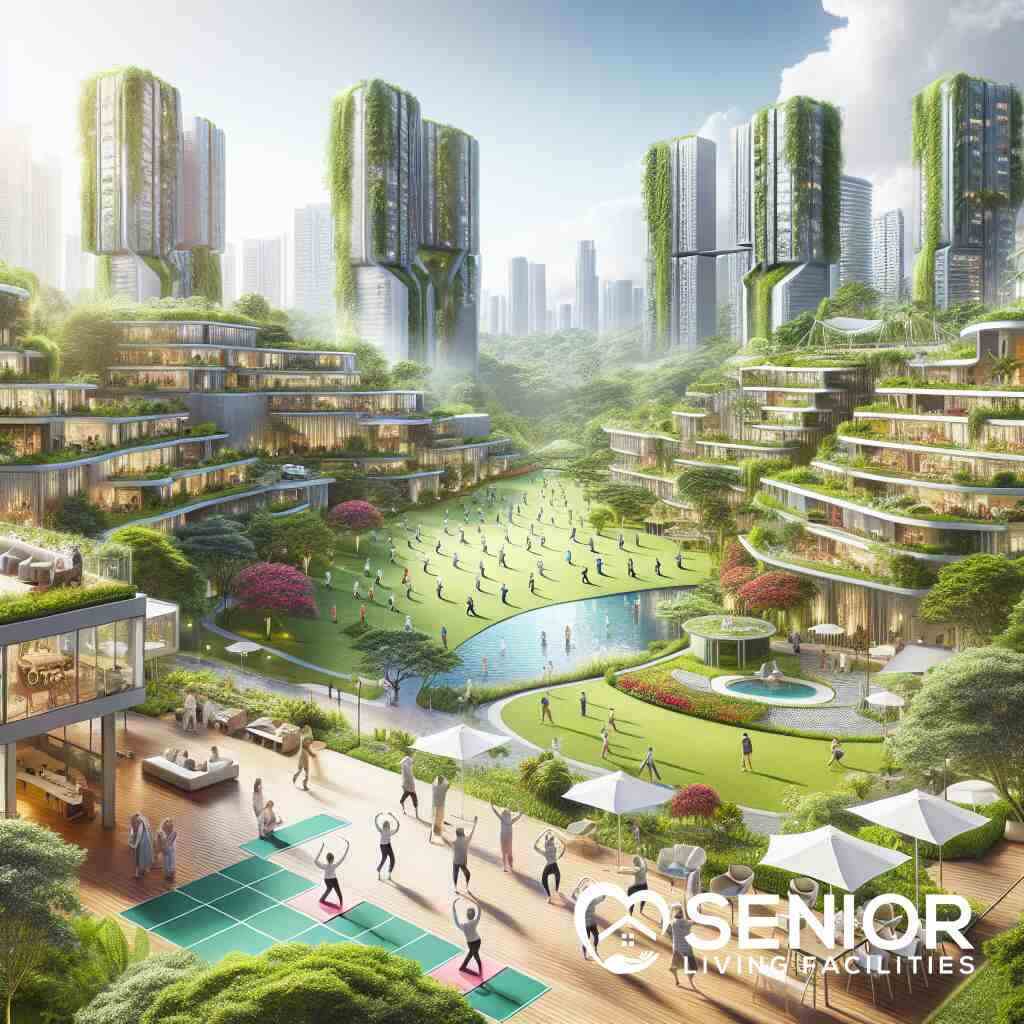
Conclusion: Envisioning Tomorrow’s Senior Communities
Sustainable Paths Forward
As we advance towards 2025, the commitment to sustainable senior housing becomes increasingly crucial. Facilities are adopting eco-friendly practices that not only minimize environmental impact but also promote healthier living conditions for seniors. The integration of sustainable technologies promises to redefine community operations, from energy-efficient systems to green building standards. This shift reflects a broader movement towards environmental stewardship in eco-friendly senior living facilities, ensuring that future communities are both conscientious and viable.
Navigating Future Opportunities
The rapid advancements in technology present a wealth of opportunities for revolutionizing senior care. As facilities integrate innovative solutions-such as AI, geriatric telehealth advancements, and remote monitoring systems-the quality of care and resident experiences will significantly improve. Embracing these technologies ensures facilities remain proactive in addressing the evolving needs of seniors. Moreover, enhanced data analytics provide deeper insights, allowing caregivers to tailor services more effectively, thus pioneering a new era of personalized, adaptive care that responds to dynamic healthcare landscapes.
Senior Care Evolutions: A New Dawn
Ultimately, the evolution of senior care encapsulates a forward-thinking approach centered on respect, enrichment, and dignity. As emerging trends continue to shape senior living, facilities will increasingly focus on personalized, inclusive, and sustainable models that honor the diverse aspirations of their residents. This new dawn in senior care celebrates not only innovation but compassion, paving the way for communities that are vibrant, supportive, and deeply connected. In this transformative journey, senior community design initiatives play an essential role in crafting dynamic environments, where the future of senior living is realized with vision and integrity.
Frequently Asked Questions
Question: What are some of the emerging trends that Senior Living Facilities are integrating into their communities for seniors 55+ by 2025?
Answer: Senior Living Facilities are at the forefront of integrating revolutionary trends in their communities for seniors aged 55 and over. By 2025, you can expect to see a significant inclusion of senior-centric smart home technology, such as advanced sensor systems and voice-activated devices, designed to increase safety and independence. In addition, eco-friendly senior living facilities will highlight sustainable practices, such as energy-saving systems and green transportation options. We are also keen on incorporating biophilic and age-friendly design principles to create nurturing and restorative environments. These include the use of natural light, plants, and accessible designs that cater to senior mobility solutions. These innovations ensure that our communities not only meet current needs but also anticipate future requirements.
Question: How are Senior Living Facilities enhancing wellness programs for seniors and promoting holistic health approaches?
Answer: At Senior Living Facilities, we place a strong emphasis on holistic health approaches for seniors as part of our enhanced wellness initiatives. Our communities offer a breadth of activities such as yoga, meditation, and tai chi to support physical wellness and mental clarity. Nutrition is pivotal in our holistic model, with farm-to-table dining experiences and personalized meal plans crafted by certified nutritionists. Furthermore, cognitive wellness programs like memory workshops and brain games are central to our offerings, ensuring mental stimulation and social engagement. By championing these wellness programs for seniors, we aim to enrich the lives of our residents by addressing their physical, emotional, and mental well-being comprehensively.
Question: What advancements in assisted living care methods does the blog ‘Top Emerging Trends for Senior Living Facilities by 2025’ highlight, and how do Senior Living Facilities adopt them?
Answer: The blog ‘Top Emerging Trends for Senior Living Facilities by 2025’ underscores various advancements in assisted living care methods that Senior Living Facilities are actively incorporating. Notable among these are AI applications in senior care, which allow personalized health monitoring and predictive analytics to prevent emergencies. We are also pioneering geriatric telehealth advancements, including remote diagnostics, facilitating easy access to healthcare professionals within our assisted living locations without the need to travel. This reduces hospital visits and encourages preventive care. By adopting these advancements, we aim to provide a dynamic and supportive living environment for our residents, ensuring they receive personalized and efficient care.
Question: How does Senior Living Facilities plan to implement inclusive senior community designs by 2025?
Answer: Senior Living Facilities is dedicated to implementing inclusive senior community designs by 2025, focusing on fostering environments that encourage social integration and intergenerational interactions. Our designs incorporate common spaces like communal lounges and recreational areas that promote meaningful connections among residents of varying ages. We leverage concepts like biophilic design in senior housing to bring nature into living spaces, enhancing residents’ sense of well-being. Additionally, we promote intergenerational living trends, enabling younger residents and seniors to share and support each other within the same community. By embracing these inclusive designs, we aim to create vibrant, engaging, and supportive environments that resonate with diverse resident needs.
